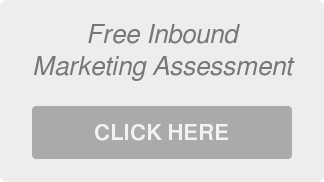 Generating quality leads is the key for any successful business. With more competitors vying for consumer attention than ever before, building an effective lead generation campaign is no longer optional—it’s a necessity. But where do you begin? Here are some tips for creating a lead generation campaign that delivers results.
Generating quality leads is the key for any successful business. With more competitors vying for consumer attention than ever before, building an effective lead generation campaign is no longer optional—it’s a necessity. But where do you begin? Here are some tips for creating a lead generation campaign that delivers results.
1. Define Clear and Measurable Goals
Every successful campaign starts with a goal. Why? Because your goals will inform the strategies and metrics you use to measure success. Start by asking yourself:
- Do you want to increase email subscribers?
- Are you hoping to generate sales demos for your software?
- Is the focus on growing your social media following or brand awareness?
Once you’ve identified your objective, make sure it’s measurable. For example, instead of “generate more sales leads,” try to “capture 300 qualified leads in 60 days.” A clear goal will keep your campaign focused and make it easier to evaluate performance.
2. Understand Your Target Audience
Who are you trying to reach? Without a good understanding of your target audience, your campaign will struggle to connect. Use personas to map out the demographics and psychographics of your ideal customer. Include details such as:
- Age, gender, location
- Job title or industry
- Pain points or challenges they face
- Interests or online behavior
When you know your audience, you can create customized messaging and choose channels that will resonate with them.
3. Offer Value With Irresistible Lead Magnets
Why would someone give you their email address or personal information? Because you offer something they really need or want. A lead magnet is your currency in exchange for contact details—it could be a free guide, a discount, or access to premium content. Your lead magnet should:
- Solve a specific problem
- Be easy to digest (think PDFs or short videos)
- Provide immediate value
Make the offer clear and exciting in your marketing materials so your audience can’t resist clicking.
4. Build A High-Converting Landing Page
A landing page is where it all happens. It's the dedicated destination your audience is directed to after interacting with your ad or content. A good landing page removes distractions and focuses solely on converting visitors into leads. Here’s how to optimize your landing page:
-
Keep it simple: The design should guide users toward completing your desired action (e.g., filling out a form). Avoid unnecessary links or clutter.
-
Write compelling headlines: The headline should instantly communicate the value of your offer.
-
Use a strong CTA: Phrases like “Download Now” or “Get My Free Guide” are direct and action-oriented.
-
Show social proof: Adding testimonials or logos of well-known brands can build trust.
-
Mobile-savvy design: Ensure your landing page displays seamlessly on all devices.
5. Promote Your Campaign With Multi-Channel Marketing
An amazing offer won’t reach the right eyes without proper promotion. Think of your campaign as a tree—you’ll need different branches (or marketing channels) to capture leads effectively. Key channels to consider:
-
Social Media Ads: Platforms like Facebook, Instagram, and LinkedIn allow you to reach hyper-targeted audiences with customized ads.
-
Email Marketing: Send personalized emails that nurture existing leads and encourage them to engage with your offer.
-
Content Marketing: Blog posts, videos, or infographics can drive organic traffic to your landing page.
-
Search Engine Optimization (SEO): Optimize landing pages with keywords like “lead generation campaign” or “[industry] lead magnet” to improve visibility.
Use analytics to track the performance of each channel and adjust your campaign as needed.
6. Nurture Your Leads
Captured leads don’t automatically turn into paying customers—it takes time to build trust and guide them to a purchase. This is where email marketing automation can be incredibly powerful.
-
Send personalized follow-ups: A simple "Thanks for downloading our guide!" email is a great way to kick-start the relationship.
-
Provide ongoing value: Keep engaging your leads with helpful blog posts, tutorials, or exclusive deals.
-
Track engagement: Monitor how leads interact with your emails and content to determine which ones are “warm” and sales-ready.
-
Score your leads: Many CRM tools offer lead scoring, which ranks your leads based on how likely they are to convert.
Take Your Lead Generation to the Next Level
Generating leads isn’t just a box to check—it’s an ongoing process of learning, optimizing, and scaling. By following these six steps, you’ll be better equipped to design campaigns that resonate, drive action, and, ultimately, grow your business.





